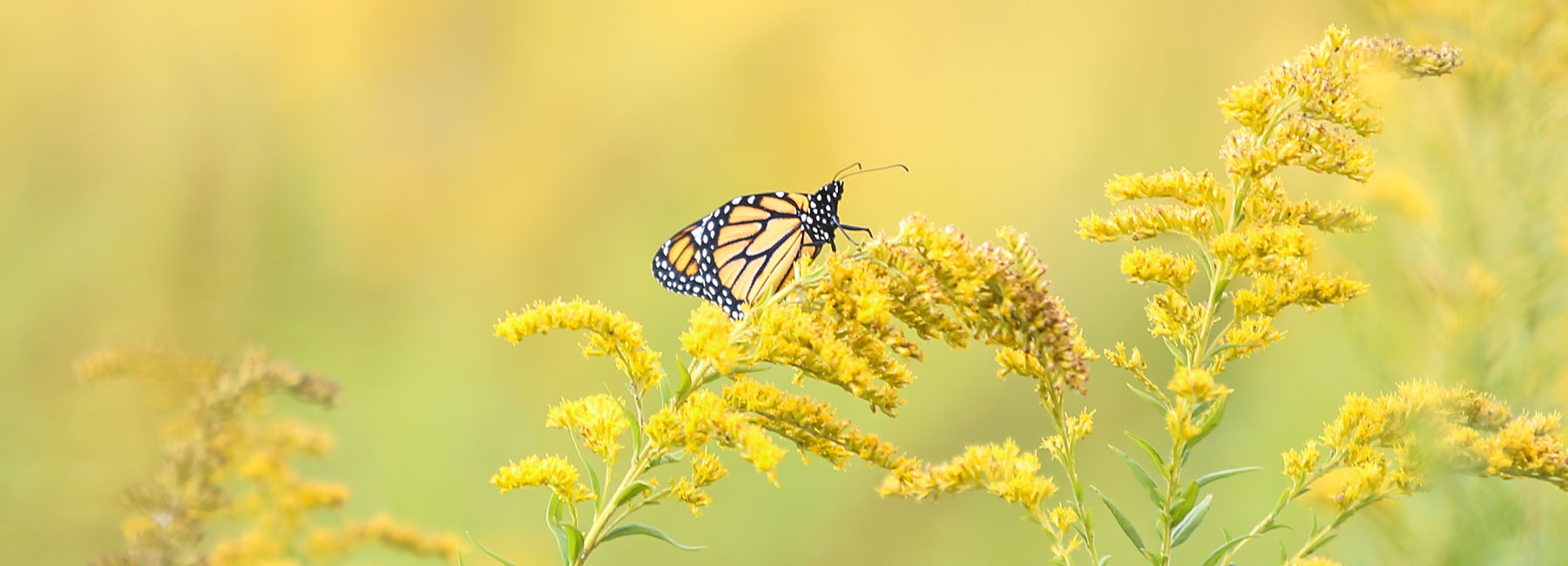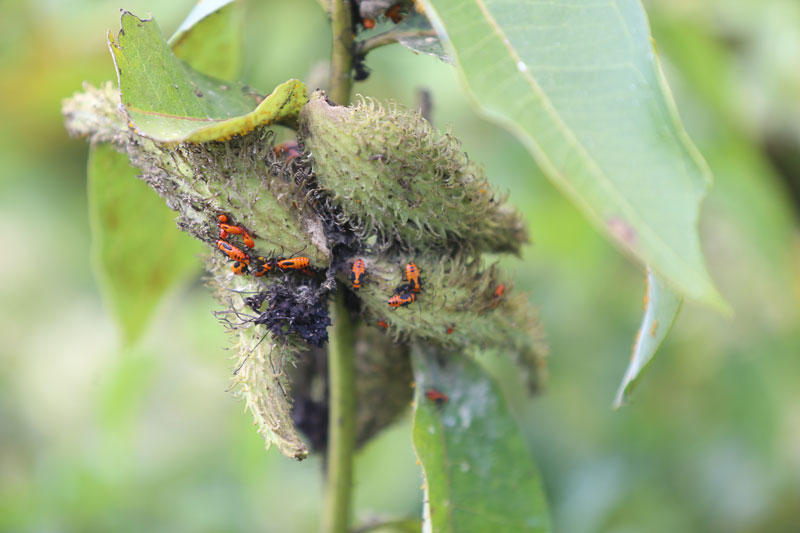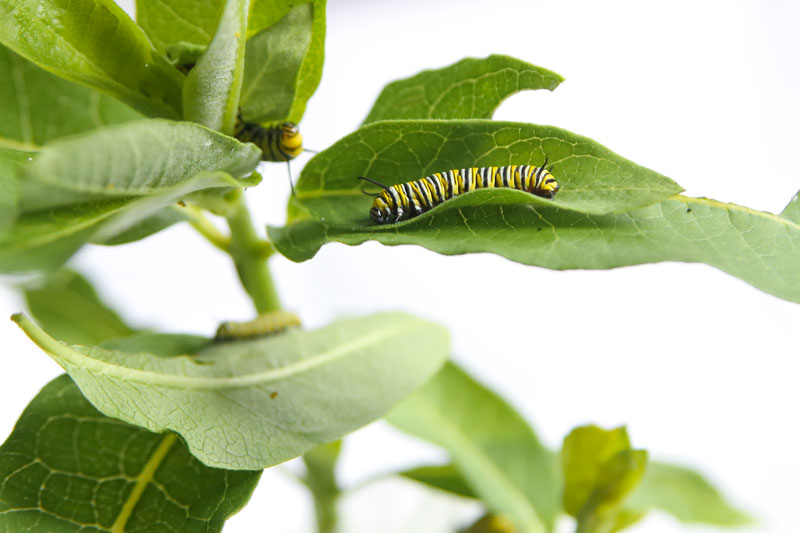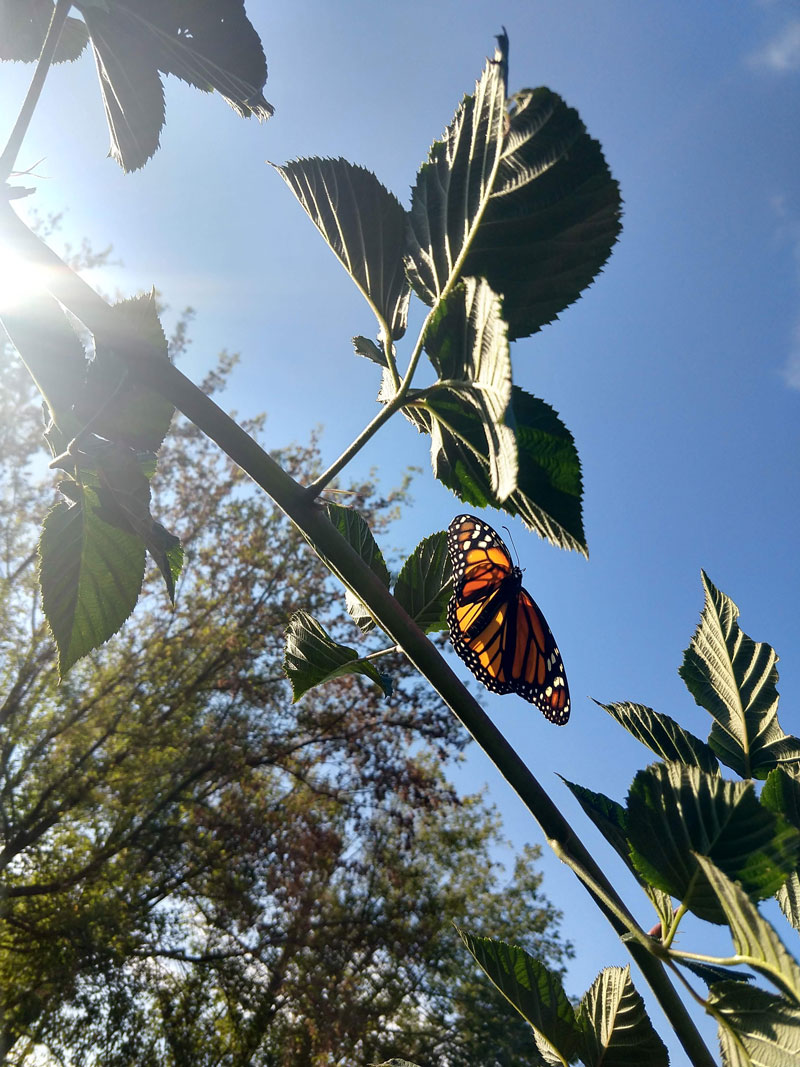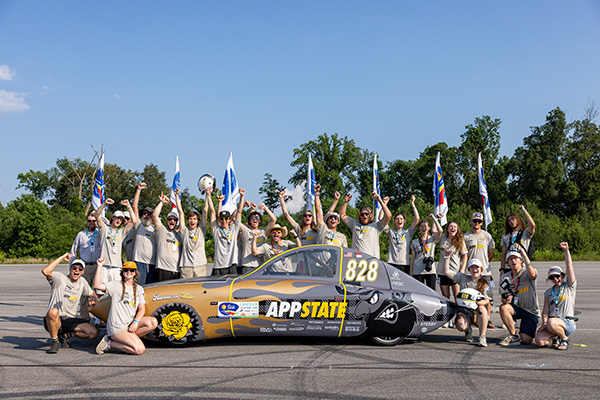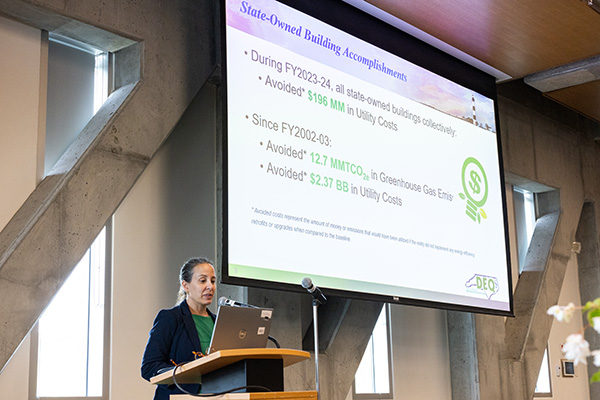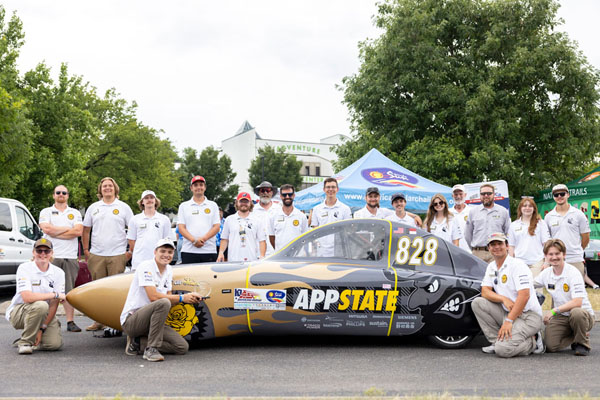Monarchs in the High Country: Helping Nature's Ambassadors Fly High
Late summer and autumn bring a familiar and charismatic visitor to our mountains: the monarch butterfly. If you’ve been looking to the sky lately or admiring goldenrod in a roadside field, you’ve probably seen them, black and orange streaks, fluttering erratically from flower to flower in search of nectar, perhaps pausing to lay eggs on milkweed. The plight of these migratory marvels is well known, with some estimates pointing to an 80% decrease in the overall population in the last 20 years, due mainly to habitat loss and pesticide use. But people throughout North America are fighting to save the monarch, including here in the high country.
What’s happening to the monarchs? One of the few long migrating species of butterfly, the embattled monarchs have been dealt a one-two punch of habitat loss and poisoning by pesticides. The main population begins the long trek in Canada, and over the course of four generations makes its way to overwintering grounds in western Mexico. Subpopulations overwinter in California and Florida.
As human populations have expanded, paving paradise to put up parking lots as we go, there has been a huge loss in the native milkweeds the monarchs require. Regular pesticide spraying of roadsides and fields has exacerbated the problem, and the colorful migrations that once drew gawkers to Blue Ridge Parkway overlooks in the high country have dwindled year by year.
So is there hope? Thanks to websites such as Monarch Watch, public awareness campaigns, and a thriving online community, populations are getting a boost. More people, businesses, and colleges are planting pollinator gardens and “Monarch Waystations,” pesticide-free areas of native plants that encourage pollinators such as birds, bees, bats, butterflies, moths, and beetles.
In 2018, Appalachian was named a “Bee Campus USA” for work related to protecting and designating pollinator-friendly spaces on campus. This certification assures that it is important to our students, staff, and faculty to provide safe habitats for pollinators and education about the pivotal role they play in ecosystems.
New numbers suggest these tactics are working: the Center for Biological Diversity reported earlier this year that the numbers of Eastern monarchs overwintering in Mexico were up 144% over the previous year, the highest since 2006. Some people take it a step further, though, seeking out monarch eggs and hand raising the tiny caterpillars, protecting them from harm until they can be released as butterflies. Some folks even place tiny tracking tags on the wings for data gathering purposes. It’s citizen science at its most ephemeral.
Dr. Ray Williams, professor of Insect Ecology at Appalachian State University, says that monarchs are important for conservation and education, and that this is a form of human intervention that is beneficial to populations. “Monarchs are easy to raise, unlike most butterflies. As long as they have enough milkweed, which is the only thing the caterpillars eat, and reasonable living conditions, they’ll probably be just fine.”
There are other, perhaps less charming denizens of the milkweed patch that are in just as much need of protecting. Tussock moth caterpillars and beetles don’t evoke the emotional response that butterflies do, and you’ll probably never see a coed with a full back tattoo of a milkweed aphid, but Dr. Williams doesn’t see that as a problem. “Anything that promotes issues of population decline and habitat reclamation are a positive. The benefits apply to plants and animals living in those habitats that people don’t care as much about.”
According to Dr. Williams, it’s a hobby the whole family can enjoy, and is especially good for children. “This is great outreach with kids; it teaches them to protect plants and animals. Anything that promotes monarchs will have other effects related to how kids see the environment and want to conserve it.”
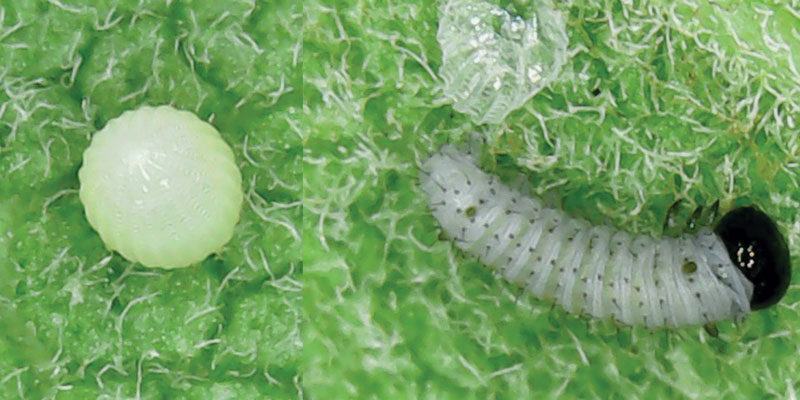
Anne Wilson, a second grade teacher at Hardin Park School in Boone, agrees. “Kids watching science in their own backyard and in class sparks curiosity about the world around them and about how nature works. Being able to actually witness a caterpillar eating its way out of its egg projected on the big screen is fascinating!”
Wilson hopes exposing kids to this transformation is a lesson they’ll always keep with them. “Of course encouraging and nurturing stewardship is what I hope would be the result of these experiences. Just being able to witness firsthand the awesome transformation of another species is something I hope they will take with them for life. It’s these experiences that create the awareness humans need to take care of this precious planet on which we live!”
So maybe this is something you’d like to try. What’s involved with bringing up caterpillar babies? Basically you need a netted structure (mesh laundry baskets work well), some monarch eggs or small instars (each phase of the monarch caterpillar is called an “instar,” and refers to how big the insect is), and lots and lots of pesticide-free milkweed. Think you have enough? Nope, go find more. When Eric Carle wrote “The Very Hungry Caterpillar,” he knew just what he was talking about. Affectionately called “caterpiggers” by those who love them, these guys eat and eat. It’s one of the two things they do a lot of (you can guess the other one). From the time the egg hatches until the time the caterpillar pupates, it will grow 2,700 times in size. That kind of bulking up takes a lot of fuel, and milkweed is nature’s Muscle Milk.
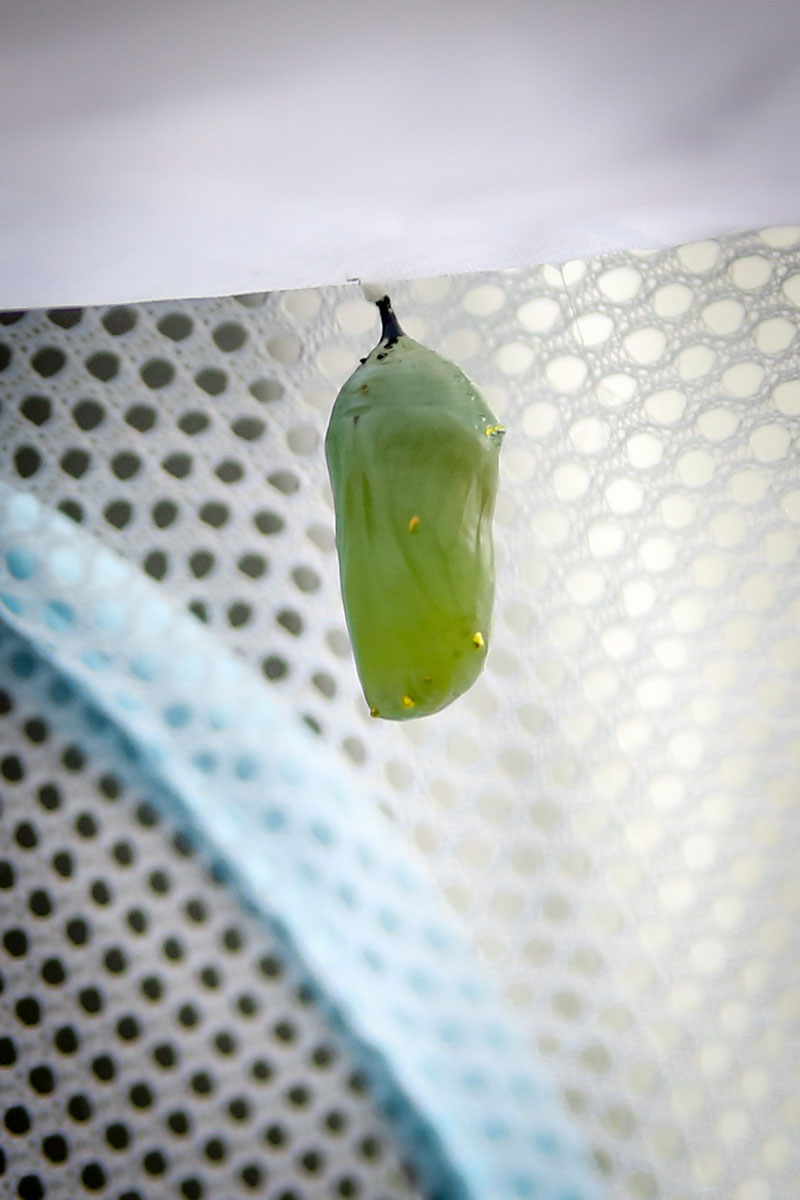
Caterpillars will shed their skin (called molting) four times, once between each instar stage. Then they’ll eat their molted skin. Can’t let that good protein go to waste! When it’s time to pupate, they wander off and find a nice quiet spot to build a silk pad and hang upside down from it in a “J” shape. Within 24 hours they’ll change from this into a pearly green chrysalis. And then we wait.
Temperature-dependent, the butterfly will emerge (called eclosing) within 9-14 days from the bottom of the chrysalis, looking wet, crumpled, and a bit confused, and begin to pump a blood-like fluid (called hemolymph) from its body into the wings to straighten and dry them. Within 4-6 hours, they’re ready to fly. Seeing a butterfly you’ve raised from something the size of a pinhead take to the sky is a beautiful, and sometimes emotional, thing. Occasionally they even come back and perch on your head or shoulder for a moment, perhaps a bit of thanks for your endless days of milkweed harvesting and your protection from hungry wasps, parasitic flies, and overeager housecats.
It’s probably the closest thing to magic you can experience in your own yard.
Monarch Facts & Tips
- Eggs can be found on the underside of milkweed leaves, from August-September in this area. They look like tiny pearls attached to the leaf. To remove the egg without damaging the leaf, use a hole punch.
- When a non-migratory monarch butterfly is hatched, it only lives for approximately 2–6 weeks. Live fast, die young, lay 500 eggs.
The migrators live 7-8 months, but have one heck of a commute. - Male monarch butterflies have scent glands on the top surface of each hindwing, look for two little black dots. These likely serve to secrete pheromones to entice the female - the Axe body spray of the insect kingdom, if you will.
- The name "monarch" is believed to be in honor of King William III of England, whose secondary title, “Prince of Orange,” makes a reference to the butterfly's main color. Now you’re ready for the “Emperors & Entomology” category on Jeopardy!
- The green and gold chrysalides are created by a carotenoid pigment combined with a hill-like structure that reflects light. The carotenoids come from their diet of milkweed. The word chrysalis comes from the Greek word “khrysallis,” which means, you guessed it, gold. Now you’re really ready for a trivia show.
